5. Shell materials
Although producers experiment with novel materials (eg acrylics) every now and then, the majority of drum shells is still made of wood. There are two well-established construction types: using solid wood and using layers of wood, i.e. plywood. Solid wood has a long tradition in drum making (since the early 19th century), but using it makes for costly and time-consuming production. This is why mainstream drums are not really made of solid wood nowadays. Looking for ways to satisfy the ever-growing demand for affordable drums, manufacturers came up with plywood as an alternative solution.
The production process, in which thin layers or "plies" of wood veneer are glued together under pressure with adjacent layers having their wood grain rotated up to 90 degrees to one another and then sealed, guarantees that the finished shells are of superior quality regarding roundness, sound, and handling. And these shells do not need to fear comparison with solid wood shells regarding their durability and the their acoustic characteristics, either. So it is no surprise that leading manufacturers such as Tama, Sonor, Yamaha, Pearl or Gretsch have been focussing on plywood shells for years now. BY THE WAY: the different manufacturers call their respective production processes by different names, but the general methods are practically identical.
Right, so the choice of plywood makes for the faster and more precise construction of absolutely round shells. But what about the sound characteristics of the woods used? Do their individual characteristics survive the translation from solid wood to plywood? This is one of the most frequently asked questions, and the answer is a resounding yes! Reason enough for us to have a look at the woods used for drum shells and say something about their sound.
This is an overview of the most commonly used woods and their individual sound characteristics:
MAPLE
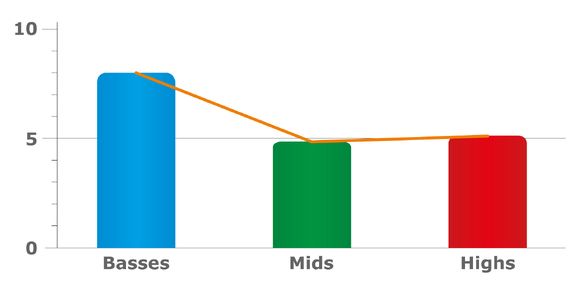
Sound characteriscs of maple shells
Maple is the most commonly used wood for drum shells. Maple shells deliver a soft and warm sound with full lower frequencies and balanced mids and highs. They have a clear sound and allow for a great variety of tunings with all-around good characteristics.
BIRCH
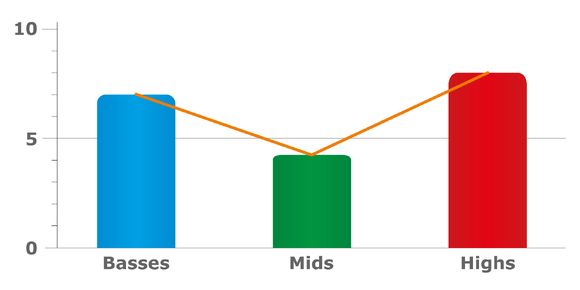
Sound characteriscs of birch shells
Birch is a very dense and sturdy wood. Compared to maple it sounds a little more agressive and brilliant and has intensive projection. Full basses and highs make for great presence of these shells. The mids are balanced. Very assertive sound.
BEECH
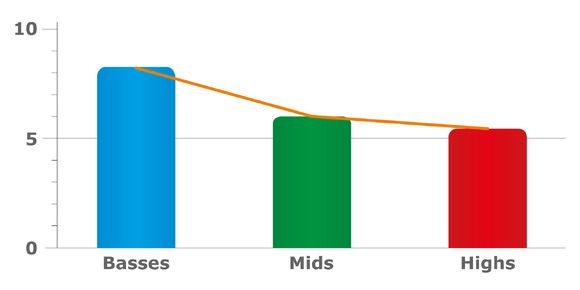
Sound characteriscs of beech shells
...is just as hard as birch, but its larger grain imparts greater power to the lower and middle frequencies in particular. Birch shells make for a powerful, vivacious sound. For those who are looking for maple's openness and warmth and birch's precision and power, beech shells might be just the thing.
OAK
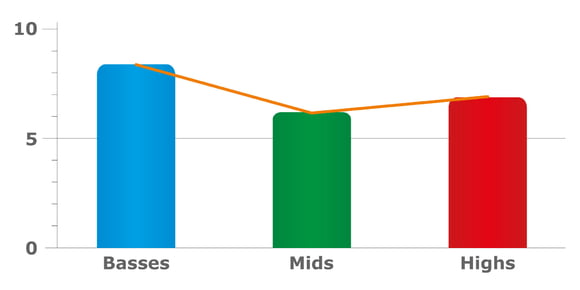
Sound characteriscs of oak shells
Oak is known for its uncompromising durability and is a real alternative to more standard woods both optically and acoustically. Its sound is vers clear and present, but always harmonious and round. Oak sets are perfect for live gigs.
MAHOGANY
For over 50 years mahogany was the standard wood used in shell making. Nowadays this rather expensive wood is hardly ever used any more. Thanks to its powerful basses, soft mids and very delicate highs, mahogany shells sound very warm and sonorous while still packing a satisfying punch.
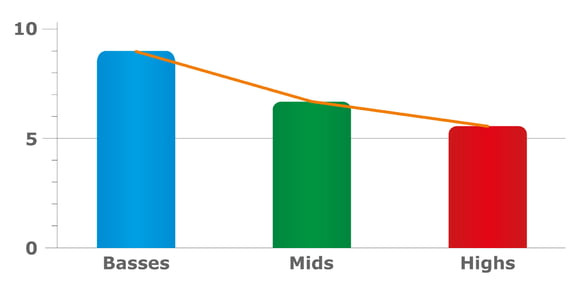
Sound characteriscs of mahogany shells
The structures of mids and highs are similar to those with maple. But thanks to the more powerful basses the overall sound is even warmer.
POPLAR
Poplar trees grow very fast, and teir wood is of medium hardness. Poplar has become the main wood used for more affordable sets and has become a real alternative to maple or birch.
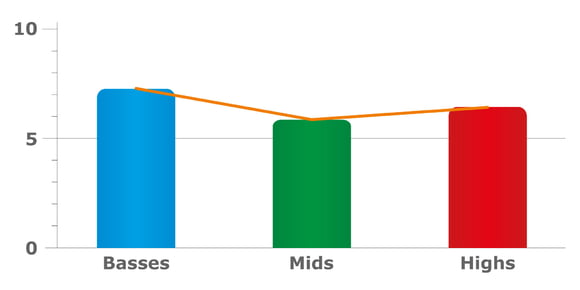
Sound characteriscs of poplar shells
Poplar drum shells sound not too dissimilar from birch or mahogany. Poplar is often used in conjunction with more expensive sound woods. If so, poplar is used for the interior plies, and maple or mahogany for the outer ones.
BASSWOOD
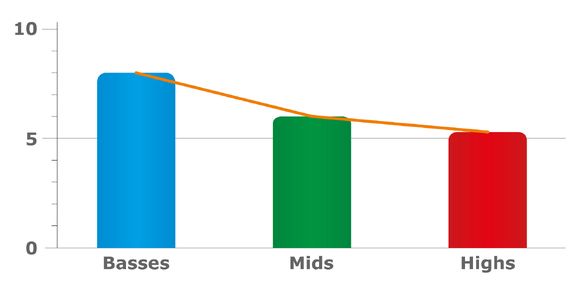
Sound characteriscs of basswood shells
Basswood, too, is a comparatively affordable and fast-growing wood. Some drummers compare its sound to that of maple, others to that of mahogany. Sound is somewhat subjective, after all... What's definitely true is that basswood shells are excellent value for money and have a sound that impresses not only beginners!
A closer look at materials and construction details
When talking of the sound characteristics of the variuos wood types, assumptions abound in the drum biz. Of course the chosen wood massively influences the sound generated, but it is the overall package, i.e. the bearing edge, the hoops used, the individual construction and the material thickness that defines the end result. We have collated the most wide-spread assumptions for you below - and evaluated them, too:A shell's inner ply determines the sound. If the innermost ply is maple, the shell will therefore sound like a maple shell. The material the other plies are made of is not as important.
- In this simplicity, this statement is not true. The innermost layer is very important, that much is right, but the core plies play a massively important part, too.
By the way, the assumption that only the outermost layer matters is just as wrong. The overall package is what matters!
- As longs as a shell is made of a single type of wood exclusively, it will sound like that wood.
This may be true in principle, but you should not underestimate the influence of parameters such as the thickness of the invidiual plies, the way they are glued together and the type of laminate on the sound.
- Solid wood shells have always been and will always be the best shells available.
Of course solid wood shells are things of beauty, but only if they are perfectly crafted. And this is not easy, especially with larger drums, which therefore take lots of time to make. This in turn makes solid wood shells so expensive that you get better value for money when you opt for well-make playwood shells.
Material thickness
The thickness of the material used also greatly infleunces a shell's sound characteristics.
THIN (4-ply, ca. 5mm)
Thin plies facilitate the transmission of the vibration from the drumhead to the shell. This results in a rich, very dynamic, woody sound which is ideal for use in recording studios, but is eminently suitable for small venues, too.
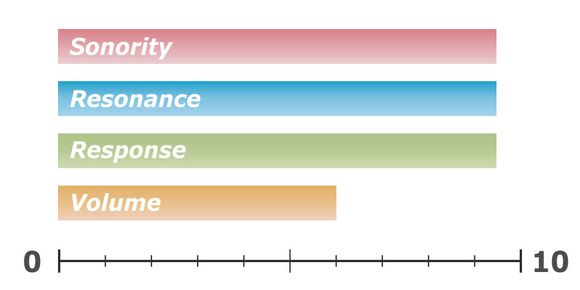
Sound characteristics of thin drum shells
MEDIUM (6-ply, ca. 7.5mm)
The shells are stiffer, which makes them more resistant to head vibrations. The result is a compromise: the sound ends up cooler than with thin shells, but the projection is more intensive. Medium-thickness shells are suitable for those looking for an all-rounder, and are always a good choice when a more powerful sound is desired.
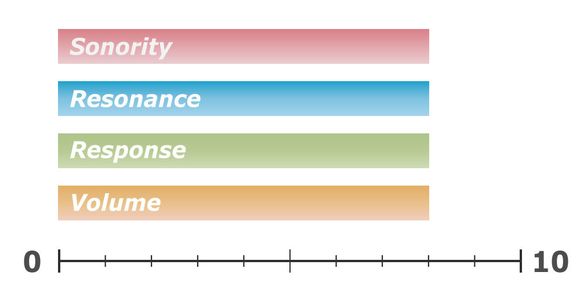
Sound characteristics of medium drum shells
To summarize: thinner shells result in a fatter sound and produce a somewhat deeper and more gutsy base tone. The response is sensitive and immediate. Thicker shells are louder and have more intensive projection. Fundamentally, it holds true that the larger the shell diameter, the thicker the material used will be. 10" tom toms are thus made from 4-6-ply wood ca. 5-7.5mm). A 22" bass drum, on the other hand, may be made from up to 9-ply wood which gives it more oomph. The thickness of each ply varies from manufacturer to manufacturer and from series to series. So if you are looking for a true rock sound with lots of punch, you might prefer thicker shells. Thinner shells afford the option of more restrained playing and result in a more open, jazzy sound. The Gretsch Catalina Club Jazz is a good example.











